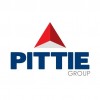Filter interviews by
Northern Sky Properties Interview Questions and Answers
Northern Sky Properties Interview Experiences
2 interviews found

(2 Questions)
- Q1. M30 concrete description about this
- Ans.
M30 concrete is a type of concrete with a compressive strength of 30 megapascals after 28 days of curing.
M30 concrete is a mix of cement, sand, and aggregate in a ratio of 1:1:2.
It is commonly used in residential construction for foundations, slabs, and columns.
The water-cement ratio for M30 concrete is typically around 0.45.
Proper curing is essential to achieve the desired strength of M30 concrete.
- Q2. What isM-25 concrete
- Ans.
M-25 concrete is a mix of concrete with a compressive strength of 25 MPa.
M-25 concrete is a mix of 1 part cement, 1 part sand, and 2 parts coarse aggregates.
It is commonly used in construction for structural components like beams, columns, and slabs.
The compressive strength of M-25 concrete is 25 MPa, which makes it suitable for medium strength applications.
About civil or finishing
Interview Preparation Tips
Finishing Supervisor Interview Questions asked at other Companies
I applied via Walk-in and was interviewed before Dec 2022. There were 2 interview rounds.

(6 Questions)
- Q1. Which IS code refer for concrete work
- Ans.
IS code 456 is referred for concrete work
IS code 456 is the code for Plain and Reinforced Concrete - Code of Practice
This code provides guidelines for the design and construction of concrete structures
It covers various aspects such as materials, mix design, workmanship, testing, and quality control
- Q2. Volume of cement in cum meter
- Ans.
Volume of cement in cubic meters is calculated based on the quantity of cement bags used and the density of cement.
Volume of cement in cubic meters = (Quantity of cement bags * Weight per bag) / Density of cement
For example, if 100 bags of cement are used, each weighing 50 kg, and the density of cement is 1440 kg/m^3, then the volume of cement would be (100 * 50) / 1440 = 3.47 cubic meters
- Q3. 1440 kg / cum cement
- Q4. Volume of steel in cum meter
- Ans.
Volume of steel in cubic meter is calculated by multiplying the length, width, and height of the steel piece.
Calculate the volume by multiplying the length, width, and height of the steel piece.
The formula for calculating volume is Volume = Length x Width x Height.
For example, if the steel piece is 2 meters long, 1 meter wide, and 0.5 meters high, the volume would be 2 x 1 x 0.5 = 1 cubic meter.
- Q5. 7850 kg/ cum meter
- Q6. Hight of lintel in building
- Ans.
The height of a lintel in a building is typically determined by the size of the opening it is spanning and the load it needs to support.
Lintels are horizontal supports above doorways, windows, or other openings in a building.
The height of a lintel is usually based on the width of the opening it is spanning.
The material and design of the lintel also play a role in determining its height.
For example, a wider opening may ...
Senior Supervisor Interview Questions asked at other Companies
Interview questions from similar companies
Assistant Manager Interview Questions & Answers
Emerald Haven Realtyposted on 20 Apr 2024
I applied via Company Website and was interviewed before Apr 2023. There were 2 interview rounds.
(2 Questions)
- Q1. Finishing process explanation ( plastering to handover)
- Ans.
The finishing process involves plastering, painting, and final touches before handing over the completed project to the client.
Plastering is done to create a smooth surface on walls and ceilings.
Painting is then carried out to add color and protection to the surfaces.
Final touches may include installing fixtures, cleaning, and ensuring everything is in place for handover.
Quality control checks are essential at each sta
- Q2. Upvc window component explanation
- Ans.
UPVC window components are parts used in the construction of UPVC windows, such as frames, sashes, glass panes, and hardware.
UPVC frames are the main structural component of the window
Sashes are the movable parts that hold the glass in place
Glass panes provide visibility and insulation
Hardware includes handles, locks, hinges, and other accessories
Seals and gaskets are used to prevent air and water leakage
(1 Question)
- Q1. Tell me about your self
Interview Preparation Tips

I applied via Referral and was interviewed in Sep 2022. There were 2 interview rounds.

(2 Questions)
- Q1. In how many days u will join the company
- Q2. What is your Sal expectations
Interview Preparation Tips

I applied via Company Website and was interviewed before Jun 2022. There were 3 interview rounds.

(2 Questions)
- Q1. What skills do you have
- Q2. Past company experience
(2 Questions)
- Q1. Where do you look yourself
- Q2. How soon can you join
Interview Preparation Tips
- About the company

Interview Questionnaire
1 Question
- Q1. Oops concepts,asp.net lifecycle,sql- trigger, update, delete, truncate different
Interview Preparation Tips

I applied via Naukri.com and was interviewed in Aug 2023. There were 4 interview rounds.

(2 Questions)
- Q1. Experience, Notice Period, TDS Rates,
- Q2. Everything is real, do not fake
(1 Question)
- Q1. Salary, join time
(1 Question)
- Q1. TDS, Entry, TDS Rate
Interview Preparation Tips

I applied via Naukri.com and was interviewed before Sep 2023. There were 2 interview rounds.
(2 Questions)
- Q1. Self Introduction?
- Q2. Reason of leaving last job ? What was last ctc ? Expectations?
- Ans.
Left previous job for career growth opportunities. Last CTC was $60,000. Expectations include a challenging role with room for advancement.
Left for career growth opportunities
Last CTC was $60,000
Expectations include challenging role and room for advancement
(2 Questions)
- Q1. Why signature Global ?
- Ans.
Signature Global is a reputable company known for its quality construction and customer satisfaction.
Reputable company with a strong track record in quality construction
Focus on customer satisfaction and delivering projects on time
Innovative designs and modern amenities in their developments
Strong presence in the real estate market with successful projects like Signature Global City, Signature Global Park, etc.
- Q2. Knowledge about Signature Global?
- Ans.
Signature Global is a real estate company specializing in affordable housing projects in India.
Specializes in affordable housing projects
Operates in the real estate sector
Focused on providing quality homes at affordable prices

(2 Questions)
- Q1. Which sq mm cable we can use for 10 hp motor?
- Ans.
The cable size required for a 10 hp motor depends on the voltage and current rating of the motor.
The cable size should be selected based on the motor's full load current (FLC) and the voltage rating.
For a 10 hp motor, the FLC would typically be around 15-20 Amps.
A common cable size for a 10 hp motor operating at 415V could be 4 sq mm cable.
- Q2. Tell me about,how many you are electrically sound?
- Ans.
I have a strong understanding of electrical systems and am capable of troubleshooting and problem-solving in this area.
I have a degree in Electrical Engineering
I have completed multiple projects involving electrical systems
I have experience working with electrical equipment and tools
I have a good understanding of electrical codes and regulations

I appeared for an interview in Jun 2019.
Interview Questionnaire
1 Question
- Q1. Regarding my work experience?
Interview Preparation Tips
Experience in real estate sector is a big plus.
RERA matters as well as contract drafting
Northern Sky Properties Interview FAQs
Tell us how to improve this page.
Interview Questions for Popular Designations
Northern Sky Properties Interview Process
based on 3 interviews
Interview experience
Interview Questions from Similar Companies
Northern Sky Properties Reviews and Ratings
based on 16 reviews
Rating in categories
|
Project Engineer
4
salaries
| ₹3.5 L/yr - ₹5.5 L/yr |
|
Site Engineer
3
salaries
| ₹3 L/yr - ₹6 L/yr |
|
Store Incharge
3
salaries
| ₹2.4 L/yr - ₹2.4 L/yr |
|
Legal Consultant
3
salaries
| ₹2.8 L/yr - ₹4.8 L/yr |
|
Senior Site Engineer
3
salaries
| ₹3 L/yr - ₹4 L/yr |

DLF

Godrej Properties

Sobha

Prestige Group
- Home >
- Interviews >
- Northern Sky Properties Interview Questions













